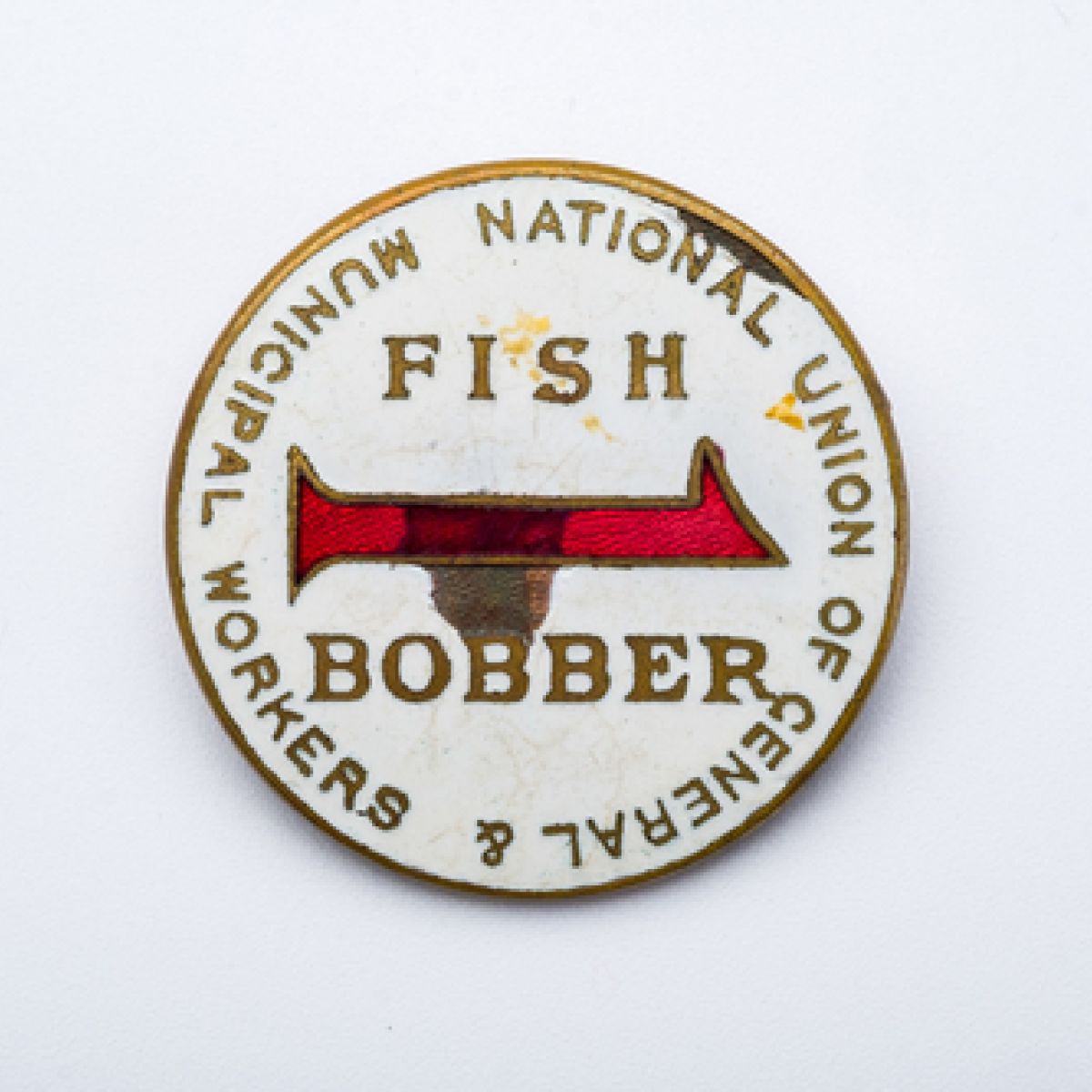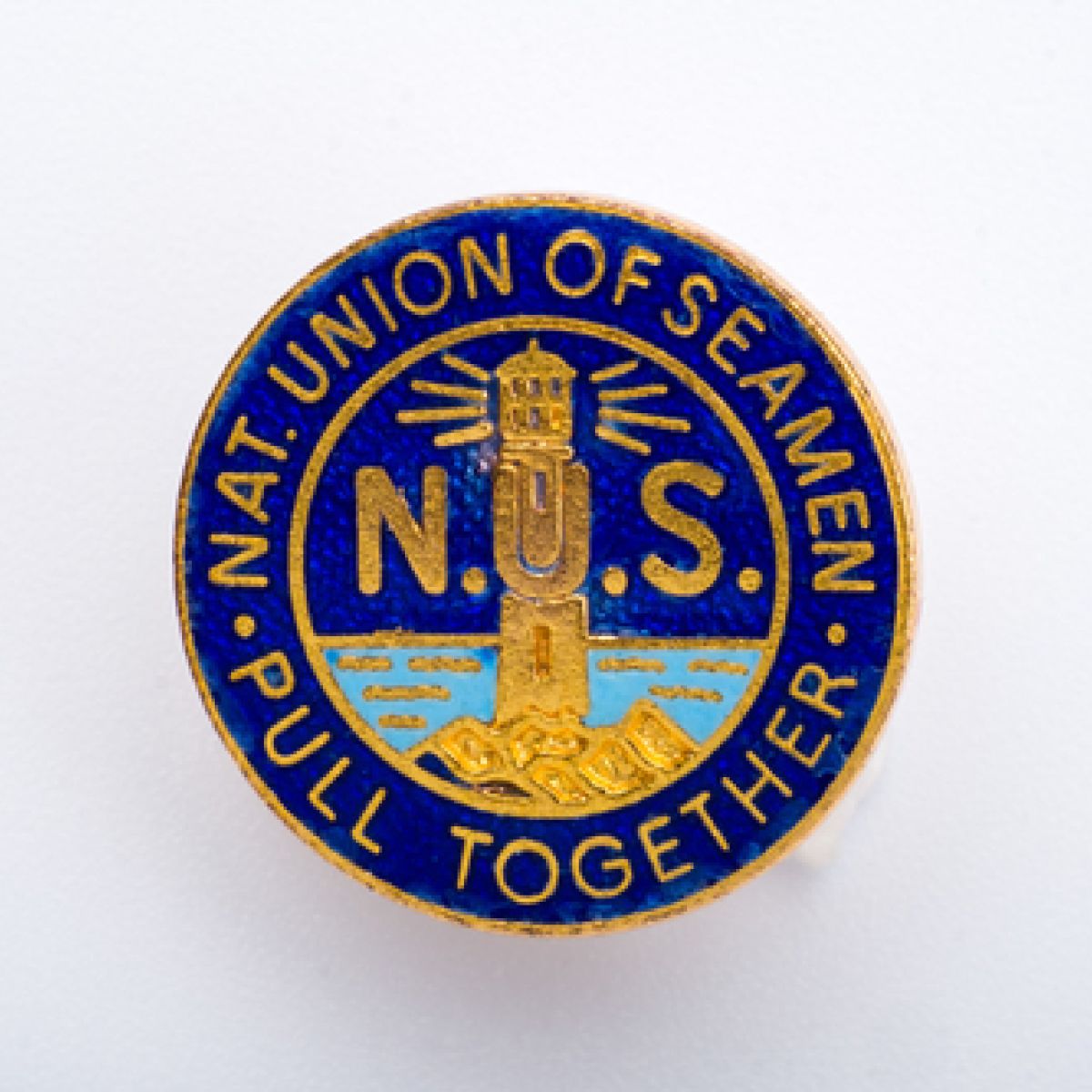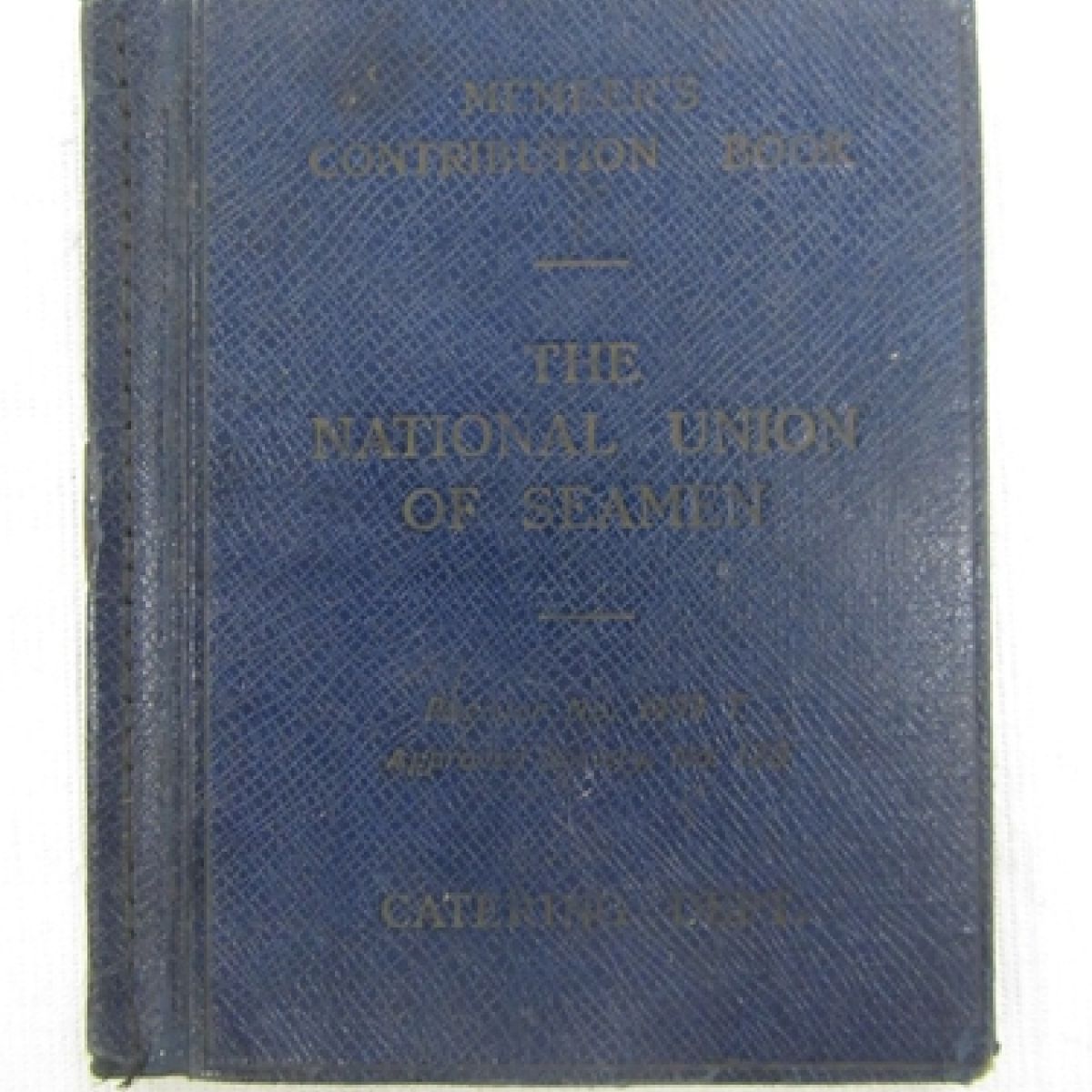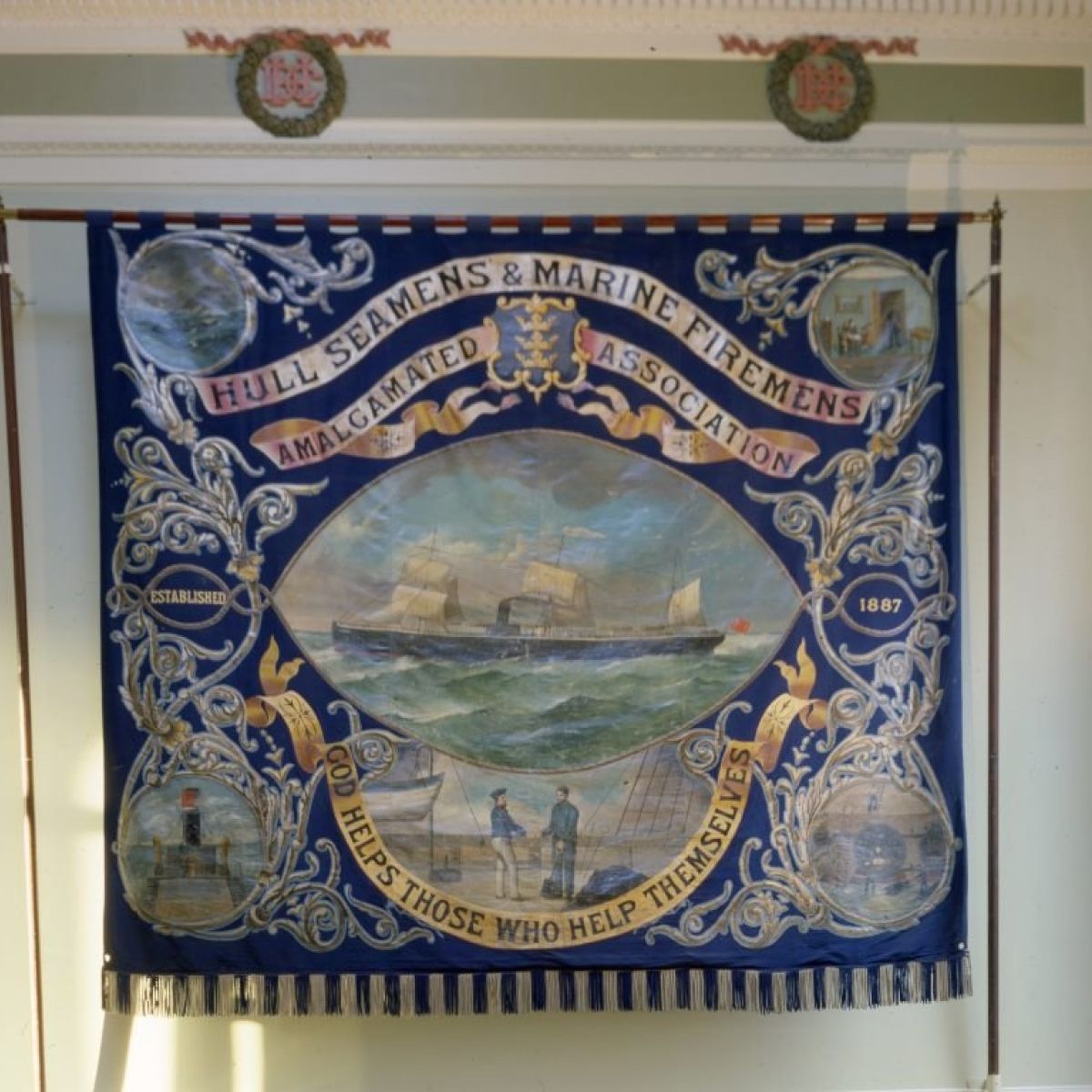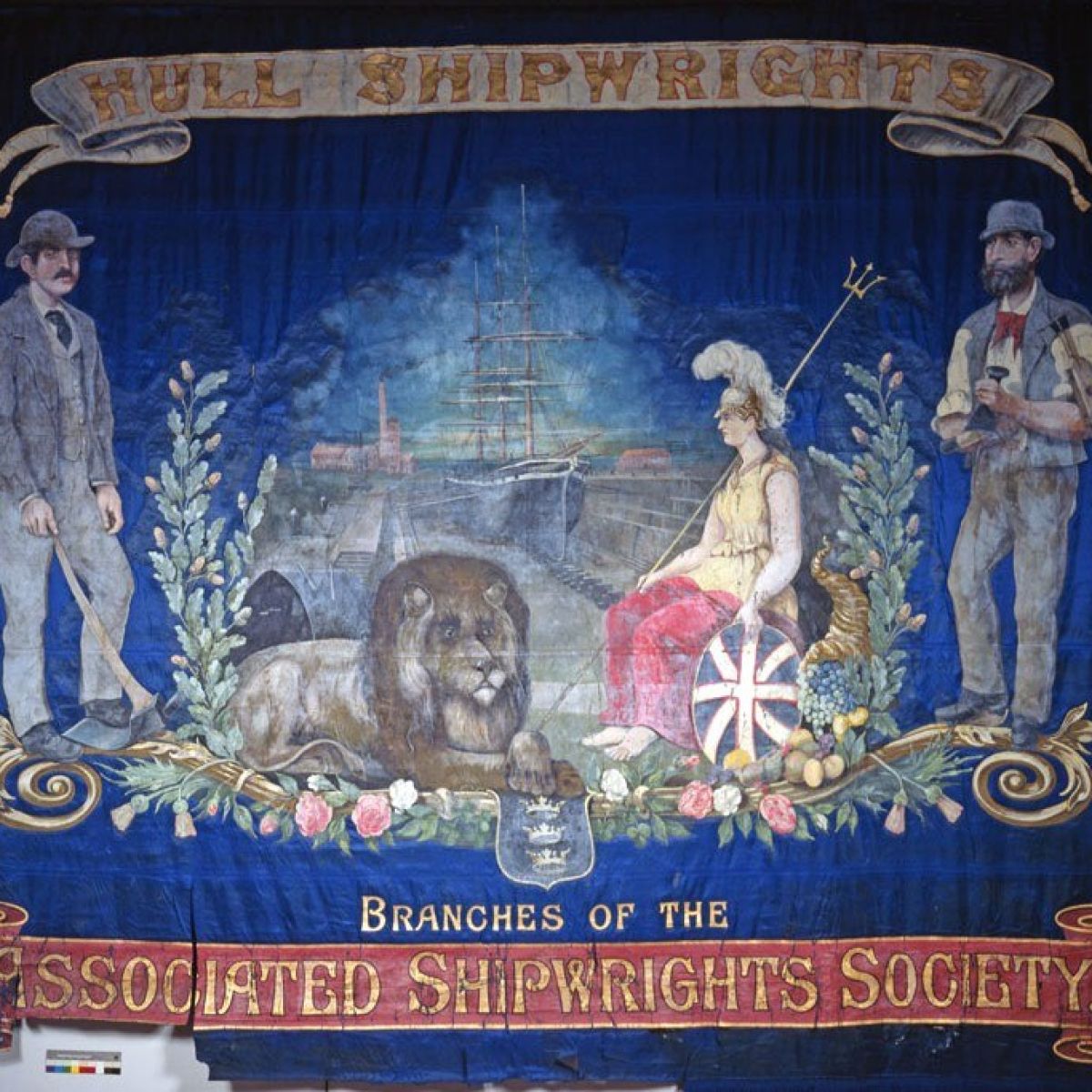22nd July 2020
Jocelyn, Research and Documentation Assistant, is based at the Hull Maritime Museum. Normally she would be helping to document the collection so that it is ready for our exciting Hull: Yorkshire’s Maritime City project. But instead, she's working from home!
Here's Jocelyn's latest lockdown blog.
Maritime trade unions were important to the seamen and dockers of Hull. Collective bargaining with employers lead to improvements in pay, health and safety, and employment rights like holiday and sick pay. Strikes could paralyse Hull’s docks for weeks.
This blog is about some of the maritime unions we have represented in our collections, and will focus on the two union banners we have.
Here is a selection of local unions that existed even for a short time:
- Hull Lightermen and Watermen’s Protection Society
- Hull Seamen’s Union
- Hull Shipwrights Provident Association
- Hull Smack Owners Association
- Hull Stevedores Mutual Aid Society
- Hull Trawler Officers Guild
- Hull Trawl Fishermen’s Society
- Hull United Fishermen’s Society
- Hull Steam Tugmen’s Union
Unions changed names often, assimilated into larger unions, and often existed only for the time it took to achieve a handful of demands. The size of the maritime unions also rose and fell with their bargaining power. For example, during the period 1888-1893, the Wilson Line (which was Hull’s largest employer) was cooperating with docker’s and seamen’s unions, and so nearly all of Hull’s seamen and dock workers were unionised.
In the Hull Maritime Museum collection, we have badges and paper items relating to the National Union of Seamen, and the Transport and General Workers Union:
We also have two union banners – one for the Hull Seamen's and Marine Firemen's Amalgamated Association and one for the Hull branch of the Associated Shipwrights Society.
So here’s some information about each of them:
Founded in 1887 as the National Amalgamated Sailors' and Firemen's Union, the National Union of Seamen was one of the largest and most powerful maritime unions. The name was changed in 1894 to the National Sailors’ and Firemen’s Union, and changed again to the National Union of Seamen in 1926. The NUS was affiliated to the Labour Party and successfully sponsored John Prescott multiple times in the 1970s and 1980s so he became MP for East Hull. In 1990, the union merged with the National Union of Railwaymen to become the National Union of Rail, Maritime and Transport Workers (RMT).
The Transport and General Workers Union was started in 1922. It was one of the largest unions in the country, and had regional and district structures. There was a Docks Group, which represented former members of unions such as the Dock, Wharf, Riverside and General Labourers' Union of Great Britain and Ireland. There was also a small Waterways Group, which represented former members of the Amalgamated Society of Watermen, Lightermen and Bargemen. In 2007, the TGWU merged with another union to become Unite the Union.
The Hull Seamen’s and Marine Firemen’s Amalgamated Association was led from its headquarters on what is now Princes Dock Street. It was originally founded in 1881 as the Hull Sailors’ Mutual Society, and renamed in 1887 when they merged with the Hull Marine Firemen’s Mutual Association. It became the Hull Seamen’s Union in 1913 and in 1922 merged into the National Sailor’s and Firemen’s Union (the NUS).
The Associated Shipwrights’ Society was founded in 1882, with branches all over England and Scotland. Originally called the Associated Society of Shipwrights, it changed its name before 1908. In the period 1908-1913, the society merged with other unions like the Amalgamated Society of Drillers and Cutters. In 1913, there was another name change – to the Ship Constructors’ and Shipwrights’ Association. In 1963, it became part of the Amalgamated Society of Boilermakers, Blacksmiths, Shipbuilders and Structural Workers, which itself became GMB (which stands for General, Municipal, Boilermakers) in 1982.
The union banners are some of my favourite objects in the Maritime Museum collection.


The designs of this banner are painted on a royal blue background. On the front is the name of the union – “Hull Shipwrights / branches of the Associated Shipwrights Society”. There is a central image of a ship in a dry dock, with a couchant lion and Britannia in the foreground. To the right of Britannia is a horn of plenty overflowing with fruits. On either side are men, presumably shipwrights, holding tools of the trade like an adze and a caulking mallet. In the centre is the blue-backed heraldic shield of Hull, with three gold coronets.
On the back of the banner is the heraldic shield of the Associated Shipwrights Society, in a gold frame with the three coronets of Hull in a baroque-style detail. On either side are birds (possibly eagles?) holding shipwright’s tools, and foliage. On this side, the banner reads “We combine to support / not to destroy”.
This banner was made in Hull. It was painted by local artist Richard Dodd Widdas in 1885, the year of his death. Widdas is better known for his paintings of coaching scenes (we have several at Streetlife Museum) and his painting of the whaling ship Diana trapped in the ice (at the Maritime Museum).


On the front are six small scenes, one in each corner (representing the perils of life at sea and the sailors return home) and two in the centre, a steamship called the 'Brotherly Love' and a sailor and a fireman shaking hands. On this side there are the three coronets representing Hull. On the back there is a scene of a sailing ship in rough green seas, with a lighthouse behind and the figure of Britannia sitting on a rock in the foreground. Both sides have the name of the union written inside a gold ribbon motif along with the phrase "God Helps Those Who Help Themselves".
The banner was made by Kenning of London, a clothing manufacturer who had a banner department that painted and embroidered large banners for trade unions and Friendly Societies. It was made in 1887 to celebrate the establishment of the union.
Banners of this size (approx. 3m x 3m) were expensive – in 1890 a painted banner with poles, carrying harness and box cost about £55 (more than £7000 in today’s money).
I find it intriguing that the banner for a local branch of a national organisation was made locally, and the banner for a local organisation was made in London.
These banners were made two years apart – 1885 and 1887, slightly preceding what has been termed ‘banner mania’ of the 1890s. They have some similarities - both banners have a blue background, which contrasts to other union banners which often have a red background to symbolise socialism and communism. The use of blue could be to differentiate these unions as maritime trade unions.
Both banners utilise the image of seated Britannia, holding Poseidon’s trident and wearing Athena’s helmet. Lisa Tickner writes in The Nineteenth Century Visual Culture Reader (edited by Vanessa R. Schwartz and Jeannene M. Przyblyski (2004)) that seated female figures like Britannia lent union banners a nobility - “in their designs the labour movement borrow armorial bearings associated – in fantasy at least – with the craft guilds, and embellished them with all kinds of devices symbolic of the unions’ aspirations and fraternal aids: rising suns, clasped hands, the all-seeing masonic eye, the serpent of capitalism, the muscular hero, the allegorical feminine virtue”. Britannia featured on coins of the era, “indicating that Britannia now ‘rules the waves’”. The Art and Ideology of the Trade Union Emblem, 1850–1925 by Annie Ravenhill-Johnson (2013) – a maritime link to the classical figure.
Both banners depict working men, union members in the workplace, and industrial scenes. These are meant to reinforce a sense of belonging and personal identification in the viewer – and came from a new tradition (in the 19th century) of depicting industrial scenes and working people – such as Millet’s The Gleaners.
In both of these amazing banners, classical figures and motifs sit side by side with working men and machinery. They are beautiful testaments to the political discourse of the time, how working men understood themselves, the symbolic literacy of people at the time, and union power in Hull.

